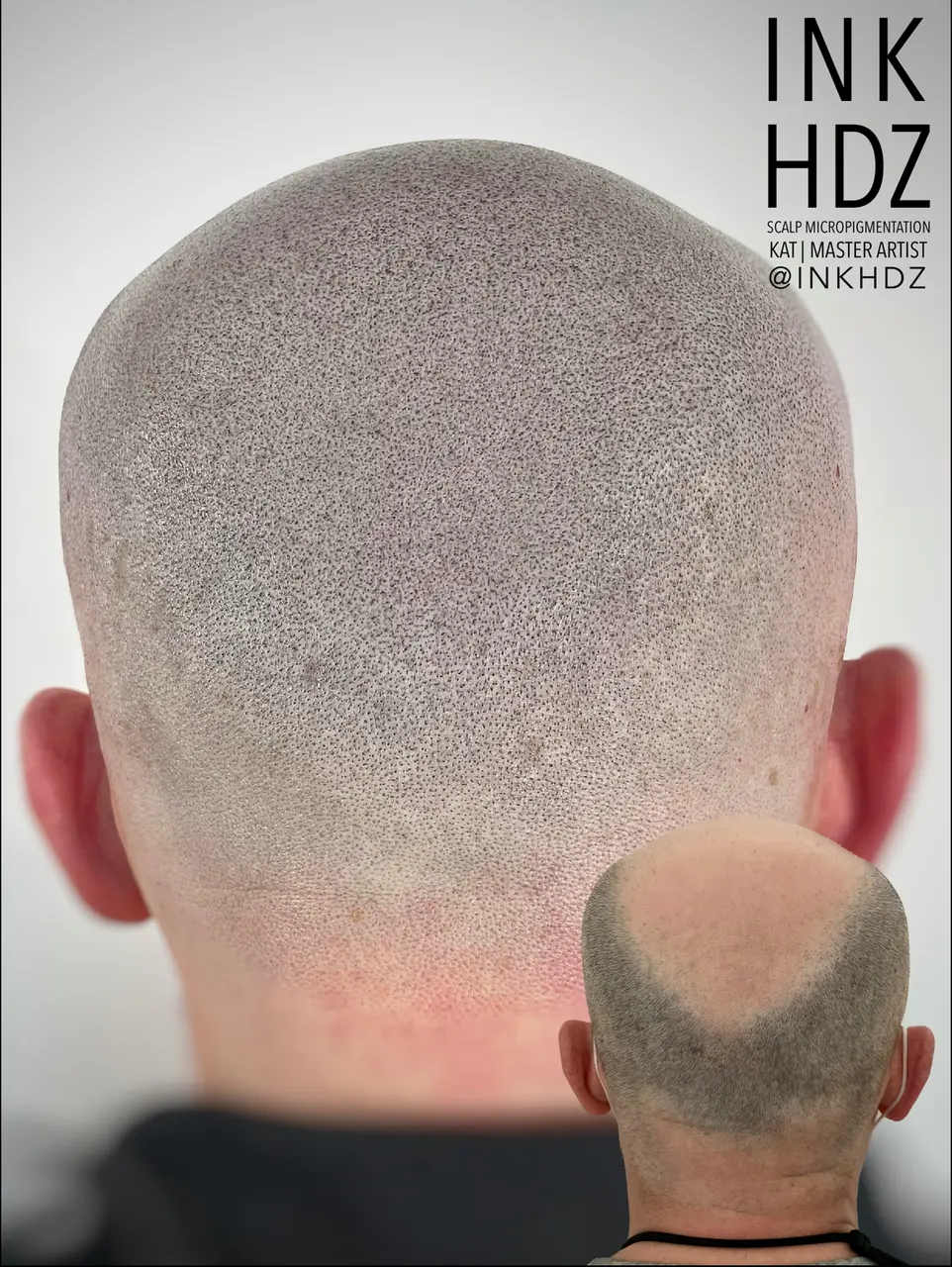The Evolution of Hair Tattoo Techniques in Cosmetic Solutions
History of hair tattoo techniques
In the past, hair tattoo techniques were primarily used to cover up scars or bald spots. However, with advancements in cosmetic solutions, these techniques have evolved to become a popular option for those seeking to create the illusion of a fuller head of hair. The history of these techniques dates back to the ancient Egyptians, who used a form of tattooing to enhance their appearance. Over time, the process has been refined and adapted to meet the needs of modern individuals looking for natural-looking results.
Introduction to hair tattoo as a cosmetic solution
Hair tattoo, also known as scalp micropigmentation, is a non-invasive cosmetic procedure that involves the application of natural pigments on the scalp to create the illusion of thicker, fuller hair. This technique is gaining popularity as a solution for baldness, thinning hair, and hairline receding. The procedure is performed by skilled professionals using specialized equipment to meticulously replicate the look of natural hair follicles. Hair tattoo offers a long-lasting and cost-effective solution for those seeking to enhance their hair appearance without the need for surgical intervention.
Types of hair tattoo techniques
Hair tattoo techniques come in a variety of types, each with its own unique characteristics and benefits. Here are the different types of hair tattoo techniques to consider:
Microblading: A semi-permanent technique that uses a handheld tool to create hair-like strokes for a natural look.
Scalp Micropigmentation (SMP): This technique involves depositing pigments onto the scalp to mimic the appearance of hair follicles, giving the illusion of a full head of hair.
Tricopigmentation: Similar to SMP, tricopigmentation involves depositing pigments into the scalp, but using a different type of ink that allows for more temporary results.
Understanding these different techniques can help you choose the best option for your desired look and lifestyle.
Choosing the right hair tattoo technique
Hair tattoo techniques have evolved over the years to offer various options for individuals experiencing hair loss or looking to enhance their hairline. When choosing the right hair tattoo technique, it's essential to consider factors such as the type of hair loss you have, your desired hairline shape, the density and color of the hair tattoo, and the longevity of the results. Some popular hair tattoo techniques include scalp micropigmentation (SMP), tricopigmentation, and hair follicle replication. Each technique has its benefits and considerations, so it's crucial to consult with a skilled practitioner to determine the most suitable option for your specific needs.
The process of hair tattoo application
Hair tattooing, also known as scalp micropigmentation, involves creating tiny, hair-like impressions on the scalp using specialized ink. The process is non-invasive and typically requires multiple sessions for the best results. During the procedure, the technician carefully matches the ink color to your natural hair shade to ensure a seamless and realistic appearance. The ink is deposited into the scalp's uppermost layer, creating the illusion of a fuller head of hair. The result is a low-maintenance and long-lasting solution for hair loss, scalp scars, and thinning hair.
Advantages of hair tattoo as a cosmetic solution
Hair tattoo, also known as scalp micropigmentation, offers various advantages as a cosmetic solution for hair loss. Here are some key benefits:
Non-invasive: Unlike surgical hair transplant procedures, hair tattooing does not require any incisions or anesthesia, making it a non-invasive option for those seeking to restore the appearance of a fuller head of hair.
Immediate Results: Hair tattooing provides immediate results, allowing individuals to achieve the look of a closely cropped hairstyle or a fuller hairline after just a few sessions.
Customizable: The technique allows for customization, enabling individuals to achieve their desired hairline shape, density, and overall look that suits their unique preferences and facial features.
Low Maintenance: Once the desired look is achieved, maintenance is minimal, requiring only occasional touch-ups to maintain the appearance of the hair tattoo.
Cost-Effective: Compared to other hair restoration options, hair tattooing is often more affordable, making it a cost-effective solution for individuals seeking a long-term cosmetic fix for hair loss.
Overall, the benefits of hair tattooing make it an appealing option for those looking to address hair loss and achieve a natural-looking, low-maintenance, and cost-effective cosmetic solution.
Potential risks and considerations
Hair tattoos, like any cosmetic procedure, come with potential risks and considerations. It is important to be aware that while the procedure is generally safe, there may still be some risks involved. Some potential considerations to keep in mind when thinking about hair tattoo techniques include:
Allergic reactions to the ink used
The possibility of infection at the tattoo site
Scarring, especially if the procedure is not performed correctly
The need for touch-up sessions as the tattoo fades over time. It's important to discuss these risks with a qualified professional before deciding to undergo a hair tattoo procedure.
Aftercare and maintenance of hair tattoo
After getting a hair tattoo, it’s crucial to take proper care of your scalp to ensure the longevity of the tattoo and maintain its vibrancy. Here are some aftercare tips to keep your hair tattoo looking its best:
Avoid direct sun exposure as much as possible, as UV rays can fade the tattoo.
Use a gentle shampoo to wash your hair, and avoid harsh chemical-based hair products.
Avoid scratching or picking at the tattooed area to prevent damage or irritation.
Moisturize your scalp regularly to prevent dryness and flakiness.
Schedule regular touch-up sessions with your hair tattoo artist to maintain the tattoo's color and definition.
Evolution in hair tattoo technology
Hair tattoo techniques have undergone significant evolution to meet the demands of those seeking cosmetic hair solutions. The advances in technology have led to more realistic and natural-looking results, with improved precision and lasting effects. These advancements offer individuals more options for addressing hair loss and scalp conditions, providing a range of innovative solutions to consider.

